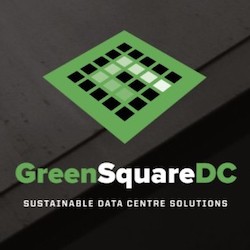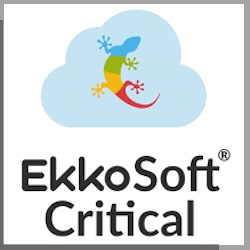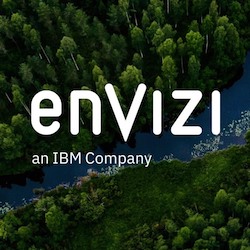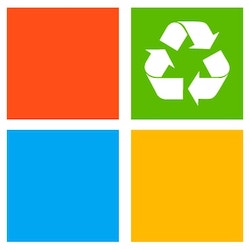In a world where resources are finite, and waste is piling up, it’s becoming increasingly clear that our current linear economic model is not sustainable. The solution? A circular economy. This innovative approach focuses on reducing waste and extending the lifespan of resources by keeping materials in use for as long as possible.
But how can businesses make the shift towards a circular economy? The answer lies in sustainable supply chains. By transforming the traditional linear supply chain into a circular one, businesses can reduce their environmental impact and support economic growth while contributing to a more sustainable future. In this blog, we’ll explore the essential elements of circular supply chains and how businesses can establish them to create a more sustainable and prosperous future.
What is a Circular Supply Chain?
A circular supply chain is a sustainable approach that focuses on reducing waste and increasing resource efficiency in the supply chain process. It’s an innovative way of designing the entire supply chain process to eliminate waste and create a closed loop system where materials are reused and recycled.
The key characteristics of a circular supply chain include waste reduction, reuse, and recycling. Waste reduction involves reducing waste at the source, such as minimizing the amount of packaging used.
- Reuse involves using products or materials multiple times, such as reusable containers or packaging.
- Recycling involves processing waste materials into new products, such as transforming plastic bottles into clothing.
The difference between linear and circular supply chains is that a linear supply chain is a one-way process where goods are produced, consumed, and disposed of. A circular supply chain, on the other hand, is a closed loop system where materials are continuously reused and recycled. Linear supply chains are often characterized by high levels of waste and inefficient use of resources, while circular supply chains aim to reduce waste and promote sustainable resource use.
By adopting a circular supply chain approach, businesses can reduce waste, minimize their environmental footprint, and promote sustainable development. Understanding the key characteristics of circular supply chains can help businesses create a more sustainable future for all.
Challenges of Circular Supply Chains
The shift towards a circular economy model is not without its challenges. Here are some of the main challenges of implementing circular supply chains:
- Lack of infrastructure: One of the biggest challenges is the lack of infrastructure to support circular supply chains. Companies need to establish new systems and processes that can handle material recovery, recycling, and reprocessing, which can be expensive.
- Limited supply of recycled materials: The supply of recycled materials can be limited, making it difficult for companies to source the materials they need for production.
- Fragmented supply chain: The current supply chain is often fragmented, with little communication or coordination between stakeholders, making it difficult to create a circular system that involves all parties.
- Consumer behavior: Consumer behavior is a significant challenge to the adoption of a circular economy. People need to be willing to buy recycled products, recycle products correctly, and embrace a culture of repair and reuse.
Examples of Circular Supply Chains
Circular supply chains have been implemented successfully in various industries, and many businesses are seeing the benefits of adopting a circular economy approach. Let’s take a look at some examples of circular supply chains in the fashion, electronics, and food industries.
- Fashion Industry: The fashion industry is known for its fast-paced and wasteful nature, but some brands are making strides towards sustainability by adopting circular supply chains. One example is the outdoor apparel company Patagonia. Patagonia has been promoting its ‘Worn Wear’ program, which encourages customers to bring in their used clothing to be repaired, reused, or recycled.
- Electronics Industry: The electronics industry is also known for generating a significant amount of waste. However, companies like Dell have adopted a circular supply chain approach, and it’s been successful. Dell has implemented a closed-loop system where they use recycled materials to make new products. The company recovers materials from used electronics and uses them in new products. This approach has resulted in significant cost savings for Dell and a reduction in waste generated.
- Food Industry: The food industry is another sector where circular supply chains can be implemented. For example, the UK-based company Toast Ale produces beer from surplus bread. The company works with bakeries and sandwich makers to collect bread that would have otherwise been thrown away. This approach has not only reduced food waste, but it’s also raised awareness about the issue. Additionally, the company donates a portion of their profits to food waste charities.
- Manufacturing Industry: The manufacturing industry has a crucial role to play in promoting sustainability and reducing waste, and circular economy principles can provide a roadmap for achieving these goals.
A Remanufacturing Solution by Infosys provides a solution framework to achieve to critical objectives of circular economy. We embrace circular practices through the reuse of salvaged components and reducing waste through scrap. This can involve going green by adopting tear-down jobs to identify and salvage reusable components from end-of-life products.
To achieve these goals, businesses can leverage solutions such as Oracle SaaS modules and custom report analytics. By adopting a close-loop end-to-end transaction approach and monitoring KPIs across the entire manufacturing process, businesses can ensure that they are following circular manufacturing practices and reducing their environmental impact. Through such measures, the manufacturing industry can contribute to a more sustainable future while continuing to drive economic growth.
While the implementation of circular supply chains comes with its challenges, these examples show that it’s possible to create a sustainable business model. The benefits of adopting circular supply chains include cost savings, reduced environmental impact, and increased customer loyalty. By learning from these examples, businesses can implement circular supply chains and help move towards a more sustainable future.
Opportunities and Benefits of Circular Supply Chains
Despite these challenges, there are also many opportunities and benefits to implementing circular supply chains, including:
- Cost savings: By reusing materials and minimizing waste, companies can reduce their material costs and waste disposal costs, resulting in significant cost savings.
- Improved reputation: Companies that embrace sustainability and the circular economy can improve their reputation and gain a competitive advantage.
- Reduced environmental impact: Circular supply chains help reduce waste and the use of finite resources, reducing the environmental impact of production and consumption.
- Innovation: The transition to a circular economy will require innovation and the development of new products, services, and technologies, which can create new opportunities for businesses.
Future of Circular Supply Chains
As we move towards a more sustainable future, it’s highly likely that circular supply chains will become the norm. Businesses across various industries are already adopting circular supply chains and reaping the benefits. This trend is likely to accelerate in the future as companies realize the economic, environmental, and social benefits of circular supply chains.
One of the emerging technologies that can enable and support circular supply chains is blockchain. Blockchain technology offers transparency and traceability that can help businesses keep track of their supply chains and ensure that materials are reused and recycled as much as possible. Blockchain technology can also be used to verify the authenticity of recycled materials, thereby reducing the risk of fraud.
Another technology that can support circular supply chains is 3D printing. 3D printing has the potential to revolutionise manufacturing by enabling on-demand production and reducing waste. It can also facilitate the production of customised products, thereby reducing the need for mass production.
Another example is remanufacturing units such as Remanufacturing Solutions by Infosys, which can increase market share by targeting a lower price point segment with remanufactured units that cost less. The solution can provide an integrated process framework for handling salvage and remanufacturing activities using a unique yield factor approach to reduce the cost contribution of salvaged components in remanufactured SKUs.
An effective approach is pre-built KPIs and analytics, which can track reuse and scrap percentages across various dimensions. By monitoring these metrics closely, manufacturers can gain insights into their circular manufacturing processes and identify areas for improvement.
Overall, the future of circular supply chains looks bright, and we can expect to see more businesses adopting circular practices in the coming years.
Conclusion
As we strive towards a sustainable future, circular supply chains have emerged as a critical component in achieving this goal. By reducing waste, promoting economic growth, and supporting social progress, circular supply chains offer a viable path towards a sustainable future. It’s evident that businesses that adopt circular practices are likely to benefit in the long run, both in terms of sustainability and profitability.
Author Manish Mahatma is a lead consultant at Infosys. Related: Read more Infosys blogs here.
References:




